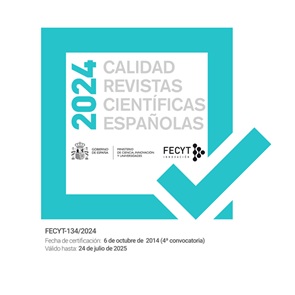TRANSPARENCIA DE LA ACCIÓN EN 'SER' Y 'TIEMPO'
Resumen
The essay tries to clarify Heidegger´s view of action, and subsequently knowlege, in Being and Time, with regard to an original level of man´s relationship with things. The standard dimensions of theory and practice and their corresponding reflexivity are referred back to the previous and - fundamental level of "looking for" and "caring for" the thing of the world-around-. The intimacy between man and things as instruments is considered as the origin of other intentional forms of knowledge. Every instrument is essentially "for the purpose of" (um zu) doing something, i.e., purposeful, and this purposefulness has within its very structure a reference to that for which it serves a purpose. Referred beyond itself to a task-to-be-accomplished, the instrument, in company with other instruments, resides in a pattern of references which constitutes the instrument as purposefull, therefore as an instrument. The ontological structure of the istrument, then, is characterized by its reference beyond itself by reason of its insertion into a total purposeful pattern. It is the task-to-be-accomplished which constitutes the unity of this pattern, and the task itself becomes an instrument inserted into a still broader pattern which constitutes the total unity of preoccupation (Besorgen).Descargas
-
Resumen248
-
PDF295
Las obras que se publican en esta revista están sujetas a los siguientes términos:
1. El Servicio de Publicaciones de la Universidad de Murcia (la editorial) conserva los derechos patrimoniales (copyright) de las obras publicadas, y favorece y permite la reutilización de las mismas bajo la licencia de uso indicada en el punto 2.
2. Las obras se publican en la edición electrónica de la revista bajo una licencia Creative Commons Reconocimiento-NoComercial-SinObraDerivada 3.0 España (texto legal). Se pueden copiar, usar, difundir, transmitir y exponer públicamente, siempre que: i) se cite la autoría y la fuente original de su publicación (revista, editorial y URL de la obra); ii) no se usen para fines comerciales; iii) si remezcla, transforma o crea a partir del material, no podrá distribuir el material modificado.
3. Condiciones de auto-archivo. Se permite y se anima a los autores a difundir electrónicamente las versiones pre-print (versión antes de ser evaluada) y/o post-print (versión evaluada y aceptada para su publicación) de sus obras antes de su publicación, ya que favorece su circulación y difusión más temprana y con ello un posible aumento en su citación y alcance entre la comunidad académica. Color RoMEO: verde.










